Production designer Tamara Deverell tells Screen about the creation of one particularly lavish element in Guillermo del Toro’s ‘Frankenstein’: Victor’s laboratory.

“I find with Guillermo, we don’t talk a lot, we just share visuals,” says Frankenstein production designer Tamara Deverell of her longtime collaborator Guillermo del Toro. “It’s a visual language — artist to artist.”
The pair first worked together on 1997’s Mimic and then TV series The Strain (2014-17). They reconnected for 2022’s noir Nightmare Alley, for which Deverell was Oscar-nominated, and anthology series Guillermo del Toro’s Cabinet Of Curiosities.
It was at the New York premiere for Nightmare Alley that del Toro first mentioned to Deverell his plan to adapt Mary Shelley’s classic novel Frankenstein. “We were in the middle of a party, with all these movie stars and models, and Guillermo leaned over and said, ‘Frankenstein…’ I was just finishing Cabinet Of Curiosities and, even though I was feeling like I wanted a break, I said, ‘Okay, I’m in.’”
For Deverell, that meant months of research, as del Toro continued to work on the script. “Guillermo wanted me to start while he was writing, to figure out where were we going to shoot, looking at locations, getting inspired and working out what are we going to build? Where are we going to build it? What is studio? What is location?”
They scouted all over Europe, before deciding on locations in the UK, including the Royal Mile in Edinburgh, Hospitalfield House in Arbroath, Angus and Burghley House in Stamford, Lincolnshire, with the production based out of Pinewood Studios Toronto, where most of the set build and shooting would take place.
Everywhere they scouted, Deverell and del Toro would find textures, colour palettes, murals, even buildings to incorporate into various sets. “It would be like, ‘That marble floor pattern.’ ‘That circle motif,’ because we know Guillermo loves his circle motifs. He was writing for some of these locations. We were in the Hamilton Mausoleum in Glasgow, an incredible structure, which would’ve driven our sound man crazy. We didn’t end up shooting there, but it was very inspirational.”
Another major influence was Marvel Comics’ 1983 edition of Shelley’s novel, for which celebrated graphic artist Bernie Wrightson created more than 60 detailed pen-and-ink illustrations. “Guillermo wanted us to draw from that,” says Deverell. “When we first see Victor in his apartment in Edinburgh, which was a set we built, all those implements and instruments were inspired by Wrightson, who drew these incredible balls hanging in nets, which have no scientific rhyme or reason but we loved them. All the equipment started in Victor’s apartment, then we moved it into the lab.”
In del Toro’s film — backed by Netflix and mounted at scale — Victor’s laboratory is housed inside an abandoned water tower, which is then renovated for his purposes. During their first trip to Scotland, Deverell and del Toro visited the National Wallace Monument in Stirling, a 67-metre sandstone structure that inspired their tower exterior. But the interior look took longer to find. “We had so many renditions of that set,” says Deverell. “We had mezzanines and different layers and several staircases going up. We were looking at Crossness pumping station [in Bexley] in London, which has this ornate wrought-iron mezzanine. We put that in, and you couldn’t see what we wanted to show the audience, which were the battery towers, the simple gesture of the circles. At some point, we were overwhelmed by our own design work. It was too busy.”
And so Deverell had one of her team work up a 3D model of the lab that stripped out everything, tapered the walls halfway up and installed a single staircase. Del Toro loved it. “That allowed us to have space and the actors to move through.”
Studio build
The main interior lab set was built on stage at Pinewood Studios Toronto, and measured 70 feet x 62 feet x 40 feet high. “It was massive, but filmed bigger,” says Deverell, who raised it eight feet off the ground to allow for the mechanism that tilted the Y-shaped “crucifix” table on which Oscar Isaac’s Victor Frankenstein assembles his creature (played by Jacob Elordi).
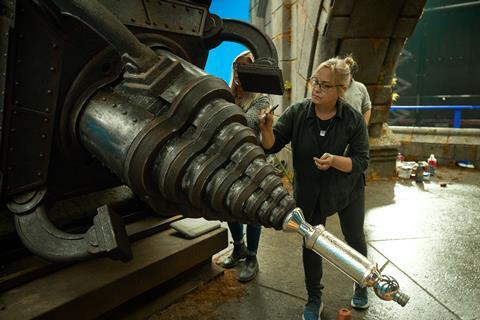
One side was dominated by a large head of Medusa: “Guillermo wanted to make it explosively big because she is the misunderstood monster of all monsters.” The other was taken up by a huge circular window, a favourite motif of del Toro and a nod to his 2015 Gothic horror Crimson Peak. “They had done that window in the house set that was beautifully designed by Tom Sanders, who is not with us anymore, sadly. [Sanders died in 2017.] It was a much smaller version; ours was huge. They took it from Notre-Dame Cathedral. So that’s a little Easter egg that follows through.”
The set also features four giant green glass battery towers that turn red when electrified. “We looked at a lot of period glass to get that green hue, then played it up a bit,” says Deverell. “We had a substructure and experimented with light inside.”
The towers were 15 feet tall, about four-and-a-half feet across, and made from moulded plastic. “They had to be watertight and steam tight, because there was steam, lights and dry ice inside,” says Deverell. “When they lit red, there was no VFX involved.” The lab’s marble floor was inspired by one del Toro had seen in Hatfield House, Hertfordshire, north of London, with a massive metal grate through which the battery towers collapse when the set blows.
In all, the laboratory was made up of eight different elements, including a full miniature, which was built on the edge of a cliff. The lobby area was constructed twice: once for before a destructive explosion, and again for scenes after. The top of the tower was built for when Victor climbs it with a lightning rod, and there was a separate set for the creature’s cell, with vaulted ceilings and an alabaster tile that Deverell wanted to echo the colour of bone and the creature’s skin. A set was built for Victor’s quarters in the lab, and another — dubbed the vortex — for a marble-sided chute in which Christoph Waltz’s financier Harlander fights with Victor.
A full-size base for the tower was also created for the final explosion, built on the site of the former Markham Fairground outside Toronto that they used for the carnival in Nightmare Alley. “We also did the frozen battlefield there,” says Deverell who ultimately was responsible for around 60 sets, including a 130-foot-long Arctic ship surrounded by 200 feet of packed ice built in the Pinewood Studios car park.
“Guillermo pushes the fantastic,” she says. “I want to base it in the real, and make it somehow historically viable, even though we’re doing a fantasy. That’s why we work well together, that push and pull, the fantastic and the real, and how we can convince the audience.”





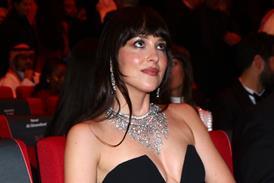
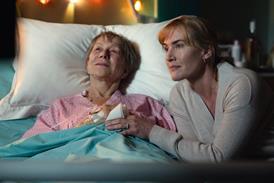
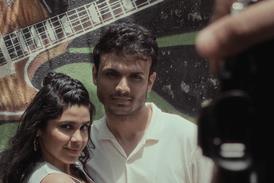





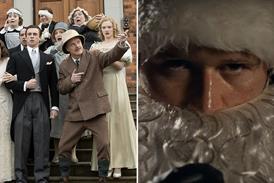
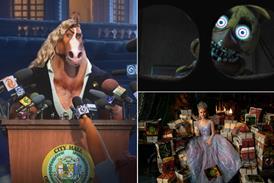

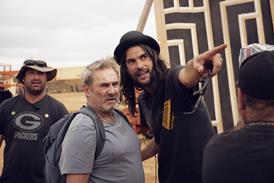







No comments yet